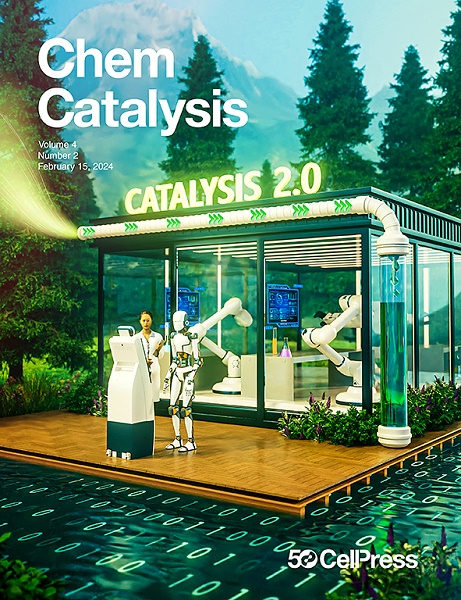底物和产物选择性尼龙水解酶的鉴定和表征
IF 11.6
Q1 CHEMISTRY, PHYSICAL
引用次数: 0
摘要
酶可以快速和选择性地水解各种天然和人为聚合物,但很少有酶被证明能水解合成聚酰胺。在这项工作中,我们合成并表征了来自n端亲核水解酶超家族的95种酶,具有30%-50%的成对氨基酸同源性。我们发现近40%的酶具有实质性的尼龙水解酶活性,但系统发育与活性之间没有关系,也没有任何证据表明尼龙水解有预先的进化选择。几种新鉴定的水解酶显示出底物选择性,与尼龙-6,6相比,尼龙-6产生的产物滴度高出20倍。然而,产率仍低于1%,在潜在应用之前需要进一步优化。最后,我们测定了尼龙-6,6-选择性水解酶的晶体结构和寡聚状态,以阐明影响活性和选择性的结构因素。这些新酶为尼龙水解酶的进化提供了新的见解,并为改进水解酶的分析和工程提供了机会。本文章由计算机程序翻译,如有差异,请以英文原文为准。

Identification and characterization of substrate- and product-selective nylon hydrolases
Enzymes can rapidly and selectively hydrolyze diverse natural and anthropogenic polymers, but few have been shown to hydrolyze synthetic polyamides. In this work, we synthesized and characterized a panel of 95 enzymes from the N-terminal nucleophile hydrolase superfamily with 30%–50% pairwise amino acid identity. We found that nearly 40% of the enzymes had substantial nylon hydrolase activity, but there was no relationship between phylogeny and activity, nor any evidence of prior evolutionary selection for nylon hydrolysis. Several newly identified hydrolases showed substrate selectivity, generating up to 20-fold higher product titers with nylon-6,6 versus nylon-6. However, the yield was still less than 1%, necessitating further optimization before potential applications. Finally, we determined the crystal structure and oligomerization state of a nylon-6,6-selective hydrolase to elucidate structural factors that could affect activity and selectivity. These new enzymes provide insights into nylon hydrolase evolution and opportunities for analysis and engineering of improved hydrolases.
求助全文
通过发布文献求助,成功后即可免费获取论文全文。
去求助
来源期刊
CiteScore
10.50
自引率
6.40%
发文量
0
期刊介绍:
Chem Catalysis is a monthly journal that publishes innovative research on fundamental and applied catalysis, providing a platform for researchers across chemistry, chemical engineering, and related fields. It serves as a premier resource for scientists and engineers in academia and industry, covering heterogeneous, homogeneous, and biocatalysis. Emphasizing transformative methods and technologies, the journal aims to advance understanding, introduce novel catalysts, and connect fundamental insights to real-world applications for societal benefit.

 求助内容:
求助内容: 应助结果提醒方式:
应助结果提醒方式:


